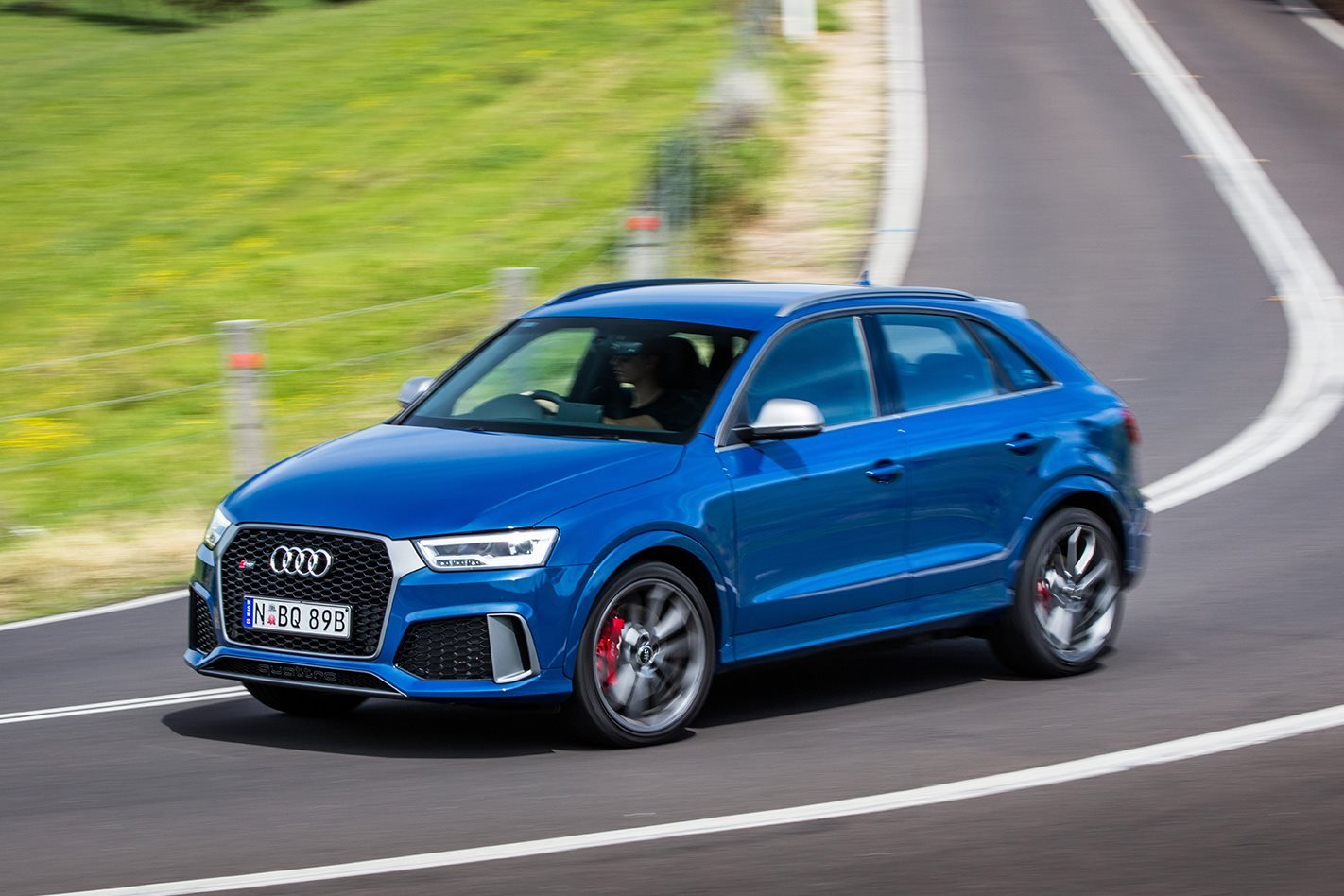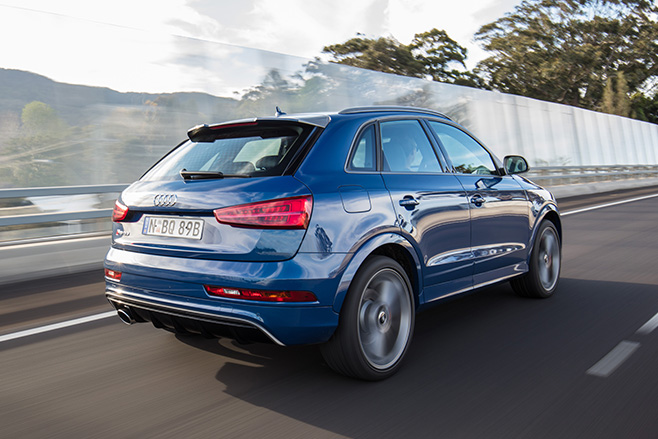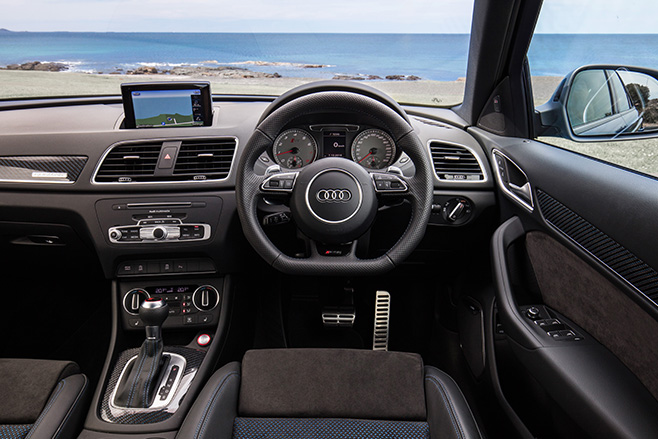
Initially regarded as somewhat lukewarm for a model bearing the iconic ‘RS’ badge, Audi Sport has been progressively turning up the heat on the RS Q3 since the first model arrived in 2014. But does more power and more equipment finally make the Audi RS Q3 a deserving member of Audi’s exclusive RennSport clan?
TELL ME ABOUT THIS CAR
The RS Q3 has headlined the Audi Q3 range for nearly three years now, occupying the sparsely populated niche of compact performance SUVs alongside the Mercedes-AMG GLA45.
Priced at $84,216, the RS Q3 performance replaces the outgoing RS Q3, and is available in just one specification – turbo petrol, all-wheel-drive, with a seven-speed automatic. Several option packages are available, with style (interior and exterior trim), performance (electronically adjustable dampers) and safety (active driving aids) all upgradeable at extra cost. Compared to its predecessor, the 2017 Audi RS Q3 performance costs $2016 more.
Power gets bumped up to 270kW while torque rises to 465Nm – a big increase on the original RS Q3’s outputs of 228kW and 420Nm. Those numbers now match the figures of the RS3 Sportback, Audi’s excellent hot hatch, and Audi Sport claims it’s all thanks to a beefier cooling package that allows the full potential of the 2.5-litre inline five-cylinder engine to be extracted.

STRENGTHS
- That engine. With a glorious off-beat five-cylinder soundtrack and excellent turbo response, the RS Q3’s powerplant is a big heart for a small SUV. Older RS Q3 models may have been hobbled by lacklustre power and torque outputs, but with 270kW of power now surging from its motor, the RS Q3 no longer suffers in that department. At 4.2 seconds to 100km/h from rest, the RS Q3 is now faster than the first-gen Audi R8 4.2 FSI supercar.
- Equipment levels. The RS Q3 performance may be expensive for a small SUV, but it compensates with healthy standard equipment levels. Among the usual luxury features like power-adjustable seats and dual-zone climate control, you’ll find LED headlamps, a power tailgate, digital radio tuner, heated front seats and a 20GB onboard music drive.
- Grip. The RS Q3 performance has loads of it, and its quattro AWD system can even shuffle 100 percent of torque to the rear axle if there’s a complete loss of grip at the front – a rare feature for most AWD SUVs. The AMG GLA 45 doesn’t have the same level of flexibility.
- Comfort. The RS Q3-specific front seats are deeply bolstered and trimmed in high-quality leather, while the rear bench is roomy and comfortable enough for two adults. Vision outside is excellent too.

WEAKNESSES
- Dated interior. Line the RS Q3 up next to some of Audi’s more recent models, and its age becomes apparent through its old-school cabin. The dinky rotary knobs for the dual-zone climate control also take a bit of the high-end gloss off this cabin.
- The MMI infotainment system is not as up-to-date compared to what Audi uses in the A3, A4, Q7 and TT. It’s also fiddly to use, with the primary dial and its ancillary buttons mounted mid-way up the centre stack – just try using it on a bumpy road.
- Ride quality. It’s not bad considering the standard wheels are a huge 20-inches across, but on rougher roads it can get brittle. Optioning adaptive dampers helps iron that out, but they come at extra cost.
- No spare tyre. The RS Q3’s exhaust box and rear-mounted battery mean a spare wheel can’t be accommodated – either a full-size or space-saver. An inflator kit with a can of goo is your only back-up in the event of a flat.

ANYTHING RIVALS I SHOULD CONSIDER?
The Mercedes-AMG GLA 45 is the only true challenger to the Audi RS Q3 performance.
The GLA 45 has a slightly tighter cabin when it comes to back seat accommodation, but it’s also a newer design. The Benz’s AWD hardware might not be as flexible as the Audi’s, but by the same token it’s no dynamic dud.
Speed wise, the RS Q3’s 2017 update and extra power means the straight-line performance of both is now line-ball.
Choosing between the two may simply come down to brand allegiance.



